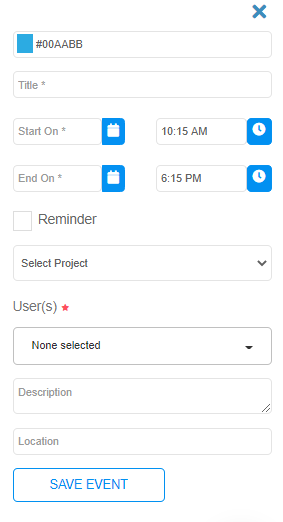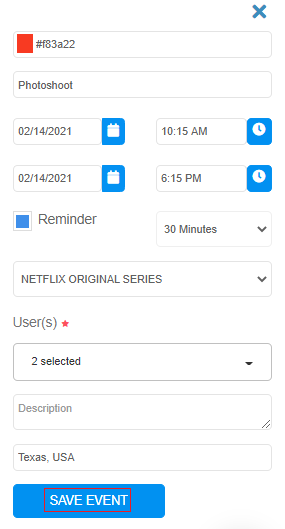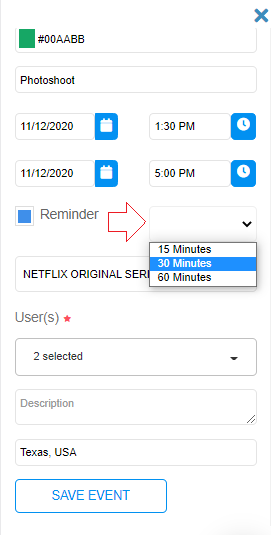Reminders are one of the most notable features in StarAgent. They are super helpful for keeping your team (or just yourself!) on track to hit deadlines for tasks or events.
In fact, you can set reminders in StarAgent in TWO different ways:
- Via the 'Task' option in the Dashboard.
- By clicking on a particular date in the 'User Calendar' .
Setting Reminders Via 'Task' Option
- From your logged-in screen, click on the '+' icon in the top right.

- Select 'Task'.

- Fill out the details about the task in the pop-up window.

✍️ NB: You can choose to fill out as much or as little information as you wish in the pop-up window; however, you do need to set start & end dates, and the user(s) in order for the reminder to work. |
- Pick a timeframe (start and end date), select the users whom you want to be alerted and select the checkbox next to 'Reminder'.

✍️ NB: To get a reminder for yourself, remember to select your name (along with other involved agency members) from the drop-down list of ‘User(s)’. |
- From the drop-down menu, select when you’d like to be reminded (15 minutes before, 30 minutes before, or 1 hour before the task/event).

- Hit ‘Save Event’.

Once you are done, this kicks off a reminder to be sent to every chosen user at the selected time.
Setting Reminders Via 'User Calendar'
- From your logged-in screen, click on the 'Calendar' icon from the top-right menu.

- Select 'User Calendar' from the header.

✍️ NB: You can use the 'User Calendar' to get a greater overview of important deadlines and milestones within your agency. |
- To create a new task/event and set a reminder for it, click the empty space on a given date.

- Enter in the task details, add users, set start & end dates, and then select the checkbox next to 'Reminder' in the pop-up window.

- From the drop-down menu, select the time when you’d like to be reminded.

- Hit 'Save Event'.

✨ Tip: You can set different colours for tasks/events to appear on your calendar. We recommend you to consider assigning colour-code rules for various tasks in your agency rather than randomly assigning these colours. For instance, you may assign red for urgent tasks, amber for not immediate but needs attention tasks, green for low priority tasks, grey for team meetings, and so on. Such colour codes can easily communicate with your team members, on what type and status of work are awaiting them. |
